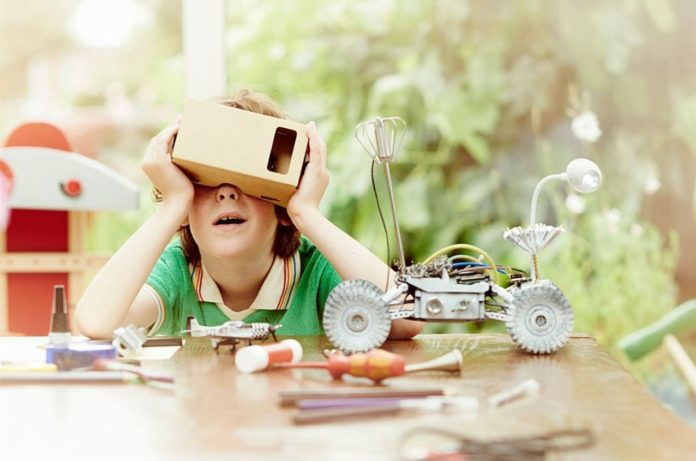People learn to identify familiar items like a “dog” and a “chair” even before they enter a school, simply by coming across them in regular life and not intending to learn about them.
A new study provides experimental evidence that people learn from exposure to things they don’t even know about and aren’t even attempting to understand.
Humans become “ready to learn” when they are exposed to new objects, according to Vladimir Sloutsky, co-author of the study and a psychology professor at The Ohio State University.
“We often observe new things out in the real world without a goal of learning about them,” Sloutsky explained.
“But we found that simply being exposed to them makes an impression in our mind and leads us to be ready to learn about them later.”
Sloutsky collaborated on the study with Layla Unger, an Ohio State postdoctoral researcher in psychology and the study’s primary author. The study was published in the journal Psychological Science on May 26, 2022.
The study involved five distinct studies with a total of 438 participants, all of which yielded comparable results.
Participants in the research initially went through an “exposure phase” in which they played a basic computer game while seeing vivid images of strange creatures. The game did not disclose any information about these animals, but for some players, unbeknownst to them, the creatures belonged to two categories: A and B.
Category A and Category B creatures, like dogs and cats in the real world, possessed body parts that were slightly varied, such as different-colored tails and hands. Participants in the control group were shown photographs of other strange creatures.
Later in the experiment, the participants were instructed that the creatures were divided into two categories (named “flurps” and “jalets”), and that they needed to determine which category each creature belonged to.
During this explicit learning phase, the researchers timed how long it took individuals to learn the difference between Category A and Category B.
“We found that learning was substantially faster for those who were exposed to the two categories of creatures earlier on than it was in the control group participants,” Unger said.
“Participants who received early exposure to Category A and B creatures could become familiar with their different distributions of characteristics, such as that creature with blue tails tended to have brown hands, and creatures with orange tails tended to have green hands. Then when the explicit learning came, it was easier to attach a label to those distributions and form the categories .”
In another experiment, participants in the exposure phase played a basic computer game that entailed hearing sounds while viewing photographs of the creatures. When the same sound was played twice in a row, participants simply pressed a key.
“The images were randomly attached to the sounds,” Sloutsky explained, “so they could not help participants learn the sounds. In fact, the participants could completely ignore the images and it would not affect how well they did.”
Nonetheless, individuals who were shown photographs of Category A and B creatures remembered the differences between them more quickly during the explicit learning phase than those who were shown images of unrelated creatures.
“It was pure exposure to the creatures that was helping them learn faster later on,” Sloutsky added.
But was it possible that they had already learned the difference between Category A and Category B creatures when they were young and didn’t need to be told?
The answer is no, according to Unger.
The simple computer game in the exposure phase in several of the trials entailed first seeing a creature in the center of the screen. Participants were then instructed to press one key if the creature jumped to the left side of the screen and another key if it jumped to the right side of the screen as rapidly as possible.
Participants were not informed that one type of creature always leaped to the left and the other to the right. They could reply faster if they understood the differences between the two creature types.
Participants did not answer faster, implying that they did not learn the difference between Category A and Category B creatures throughout the exposure phase of the study.
However, in the explicit learning section of the experiment, they learned the difference between them faster than individuals who were exposed to photographs of other creatures during the earlier exposure phase.
“The exposure to the creatures left participants with some latent knowledge, but they weren’t ready to tell the difference between the two categories. They had not learned yet, but they were ready to learn,” according to Unger.
According to Sloutsky, this is one of the few experiments to provide evidence of latent learning.
“It has been very difficult to diagnose when latent learning is occurring,” he added. “But this research was able to differentiate between latent learning and what people learn during explicit teaching.”
Image Credit: Getty
You were reading: Clues What Makes Our Brain ‘Ready to Learn’ New Things
